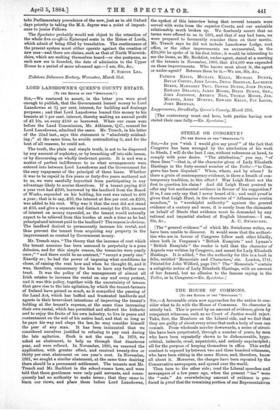STEELE OR CONGREVE ?
[To THE EDITOR OF THE " SPECTATOR:1 SIE,—As you "wish I would give my proof" of the fact that Congreve has been wronged by the attribution of his work to Steele, I will do the best I can, without references at hand, to comply with your desire. "The attribution," you say, "of these lines "—that is, of the character given of Lady Elizabeth Hastings in the forty-second number of the Tatter—" to Con- greve has been disputed." When, where, and by whom ? Is there a grain of contemporary evidence, is there a breath of con- temporary tradition, to this effect ? Was Leigh Hunt not the first to question his claim And did Leigh Hunt pretend to offer any but sentimental evidence in favour of his suggestion P If so, I can only say that I never heard of it ; and until proof is given that Leigh Hunt, in the character of " Athanasius contra mundum," is "worshipful authority" against the general evidence of a century and more, it is surely from the claimants on behalf of Steele that evidence must be demanded by any rational and impartial student of English literature.—I am, [The "general evidence" of which Mr. Swinburne writes, we have been unable to discover. It would seem that the authori- ties who are in favour of Congreve follow each other blindly, since both in Ferguson's "British Essayists" and Lynam's "British Essayists" the reader is told that the character of Aspasia was written by Congreve, and meant for Lady Elizabeth Hastings. It is added, " See the authority for this in a book in folio, entitled Memorials and Characters,' etc. London, 1741. Printed for John Wilford, page 780." The " Memorials " contain a eulogistic notice of Lady Elizabeth Hastings, with an amount of her funeral, but no allusion to the famous saying in the Tatter, or to Congreve.—En. Spectator.]














































 Previous page
Previous page